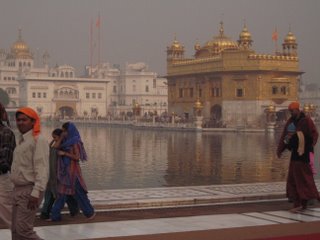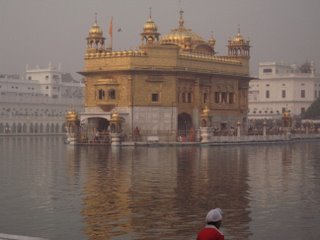There was a book I couldn't get in LA, San Francisco, or Anchorage. But Elliott Bay Book Company said they had a copy when I called. It's a surprise for a relative, so nothing here yet.
But here are some other books I saw on the shelves. Remember books?
HOW TO TALK TO YOUR CAT ABOUT GUN SAFETY - Zachary Auburn
From the Preface:
"My fellow purrtiots,
You hold in your hands the only book in print today with the courage to tell it like it is. To stand up to the idolaters, the liberals, the international bankers, and the secret kings of Europe who want to destroy America and replace it with their one-world government. To bring about our downfall, these villains have targeted what is surely our greatest national resource: our cats. They know that no other cats in the world are as cute as ours. American cats have the softest bellies, the fluffiest tails, and the loudest purrs. We are the greatest country in the history of the world, and we have the cats to match. Our enemies know they have no chance of defeating us while we stand tall with our cats by our sides, and so for years these scoundrels have worked in the shadows, trying to weaken us and our cats. Stripping from ur cats their Second Amendment right to bear arms! Undermining the faith of our kittens by teaching them the lie of evolution! Addicting out feline friends to the scourge of catnip! The cats of America are under siege . . ."

BLANKETS, Craig Thomson
From DrawnandQuarterly:
"This groundbreaking graphic novel, winner of two Eisner and three Harvey Awards, is an eloquent portrait of adolescent yearning; first love (and first heartache); faith in crisis; and the process of moving beyond all of that. Beautifully rendered in pen and ink, Thompson has created a love story that lasts."
RAD WOMEN WORLDWIDE - Kate Schatz
From Advocate:
Rad Women Worldwide tells fresh, engaging, and inspiring tales of perseverance and radical success by pairing well researched and riveting biographies with powerful and expressive cut-paper portraits. Covering the time from 430 B.C.E. to 2016, spanning 31 countries around the world, the book features an array of diverse figures, including Hatshepsut (the great female king who ruled Egypt peacefully for two decades), Malala Yousafzi (the youngest person to win the Nobel Peace Prize), Poly Styrene (legendary teenage punk and lead singer of X-Ray Spex), and Liv Arnesen and Ann Bancroft (polar explorers and the first women to cross Antarctica). This progressive and visually arresting book is a compelling addition to works on women’s history.
WE CAME TO AMERICA - Faith Ginggold
From Kirkus:
"Known for her trademark folkloric spreads, Caldecott Honoree Ringgold showcases the arrival of people immigrating to America. By way of luscious colors and powerful illustrations, readers embark upon a journey toward togetherness, though it’s not without its hardships: “Some of us were already here / Before the others came,” reads an image with Native Americans clad in ornate jewelry and patterned robes. The following spread continues, “And some of us were brought in chains, / Losing our freedom and our names.” Depicted on juxtaposing pages are three bound, enslaved Africans and an African family unchained, free. The naïve-style acrylic paintings feature bold colors and ethnic diversity—Jewish families, Europeans, Asian, and South Asian groups all come to their new home. Muslims and Latinos clearly recognizable as such are absent, and Ringgold’s decision to portray smiling, chained slaves is sure to raise questions (indeed, all figures throughout display small smiles). Despite these stumbling blocks, the book’s primary, communal message, affirmed in its oft-repeated refrain, is a welcome one: “We came to America, / Every color, race, and religion, / From every country in the world.” Preceding the story, Ringgold dedicates the book 'to all the children who come to America….May we welcome them….'”
THE BATTLE FOR HOME - Marwa Al-Sabouoni
From The Guardian.
". . . With so much of the country destroyed, what will the future look like? People close their eyes, and they wonder: is it even possible to imagine such a thing?
Marwa al-Sabouni believes it is – and her eyes are wide open. A 34-year-old architect and mother of two, Sabouni was born and grew up in Homs, scene of some of the most vicious fighting. Unlike many, however, she did not leave Syria – or even Homs itself – during the war. The practice she and her husband still (in theory) run together on the old town’s main square was shut up almost immediately: this part of the city quickly became a no-go area. But her home nearby somehow survived intact, and her family safe inside it.
“I’m lucky,” she says. “I didn’t have to leave my home. We were stuck there, as if we were in prison; we didn’t see the moon for two years. But apart from broken windows there was no other damage.” She laughs, relishing my astonishment at this (we’re talking on Skype, which feels so strange, the cars in her street honking normality – or a version of it – with their horns). . . "
ATLAS OBSCURA: An Explorer's Guide to the World's Hidden Wonders - Joshua Foer, Dylan Thuras, Ella Morton
This book is divided by continents and then countries. I randomly opened to a page to a 'hidden wonder' I'd actually been to. On India's northwest border with Pakistan, outside Amritsar, there's a bizarre, but uplifting ceremony held each sundown when the flag is powered at the border called the
Wagah border ceremony. A couple pages later was another choice Indian attraction we had visited - Jantar Mantar, an observatory built in 1728, in Jaipur. The Alaska entries are less compelling. The Eklutha cemetery and the Adak National Forest sign are definitely unique, but not quite of the same magnitude as those Indian entries.
NEIN - Eric Jarosinski
From Publishers Weekly:
". . . Nein is not no. Nein is not yes. Nein is nein," he explains. The slim manifesto is divided into digestible, tweet-length aphorisms (each on its own page) with a hashtag for a title. "#TechRevolution/ Turn on./ Log in./ Unsubscribe./ Log out." Jarosinski also includes a hilarious glossary of Nein-ish words and phrases. Performance art, for instance, is defined as "six doppelgangers in search of a selfie." Technology particularly draws his ire. He calls Instagram a "marketplace in which pictures of your cat are exchanged for a thousand unspoken words of derision." There are gems on nearly every page. The book might seem tongue-in-cheek, but Jarosinski's cynical aphorisms about philosophy, art, language, and literature hold plenty of truth. . . "




















